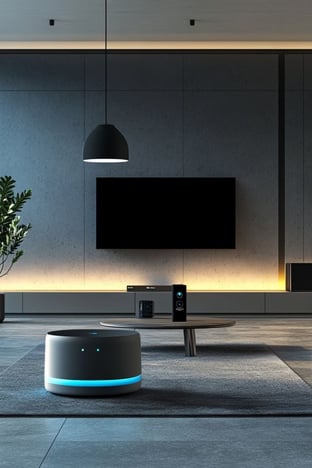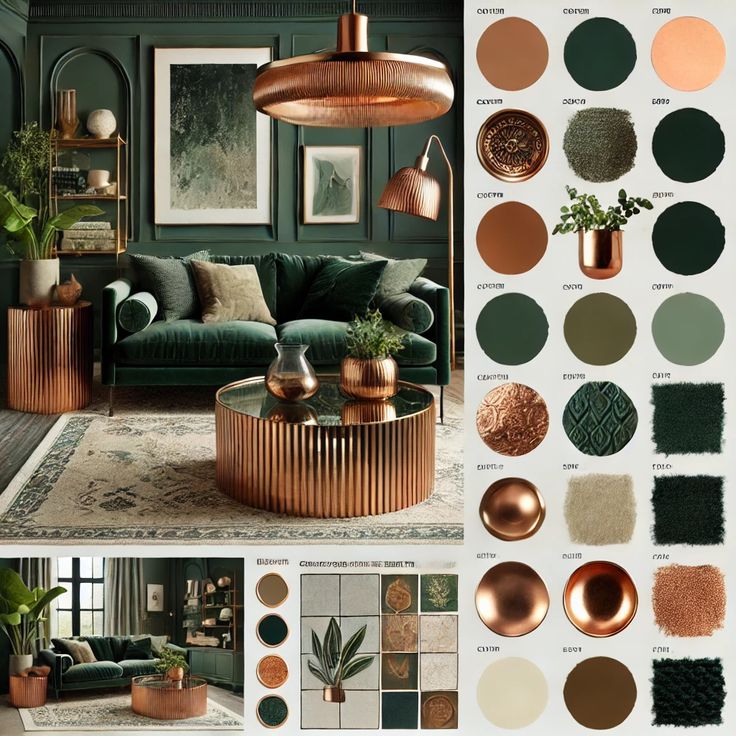
Unveiling Modern Interior Design: An In-Depth Professional Guide

Modern interior design is not merely a fleeting aesthetic; it is a profound philosophy that has meticulously shaped residential and commercial environments for over a century. Emerging from the foundational principles of the early 20th-century modernist movement, it represents a deliberate departure from superfluous ornamentation, instead championing an ethos of simplicity, inherent functionality, and a harmonious integration between indoor and outdoor realms. While occasionally misconstrued as cold or austere, authentic modern design is a carefully orchestrated discipline aimed at cultivating serene, highly functional, and profoundly aesthetic spaces that foster clarity, comfort, and a timeless appeal.
1. The Principle of Clean Lines and Open Spaces
At the very core of modern design lies an unwavering commitment to crisp, straight lines and an expansive sense of openness. This fundamental principle dictates that spatial arrangements should feel unencumbered, facilitating effortless circulation and visual continuity. Architectural elements are often celebrated, with large, unadorned windows and open-concept floor plans serving as hallmarks. Furniture selections typically exhibit streamlined profiles, characterized by geometric precision and a distinct lack of excessive embellishment. Pieces are often low-profile, emphasizing horizontal lines and allowing the eye to sweep across the room without interruption. Walls are frequently left intentionally bare or punctuated by thoughtfully curated art pieces, thereby allowing the inherent architectural elements and the expansive negative space to emerge as primary design statements.
"Less is more" is not merely a common adage in modern design; it serves as a foundational tenet that meticulously guides every decision, from initial spatial planning to the final selection of furnishings, ensuring every element contributes to the overall tranquility and function.
This deliberate emphasis on open floor plans and unobstructed sightlines is instrumental in maximizing the influx of natural light, cultivating an airy ambiance that imbues even more compact rooms with a profound sense of spaciousness and inviting warmth. The absence of clutter is not just about tidiness; it's a deliberate design choice that enhances clarity and promotes a sense of calm.
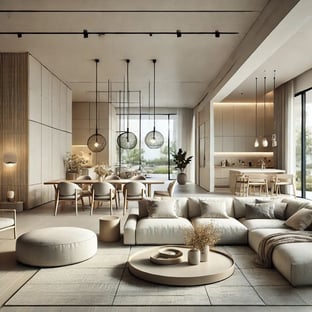
2. The Serenity of a Neutral Color Palette
Modern interiors are distinguished by their sophisticated and disciplined application of a neutral color palette. Hues of pristine white, various grays (from charcoal to dove), deep blacks, and a spectrum of warm beige and taupe tones establish the foundational layer. This chromatic restraint cultivates a calm, cohesive, and enduring backdrop that promotes a sense of spaciousness and serenity. The psychological effect of these colors is to create a peaceful environment, allowing the inhabitants to feel relaxed and grounded.
This intentional chromatic restraint permits other design elements, such as nuanced textures, the dynamic interplay of natural light, and meticulously selected accent pieces, to command attention and define the space. While a predominance of neutrals is characteristic, this does not signify an absence of color. Rather, vibrant tones are introduced with precision and judiciousness. A singular, impactful work of abstract art, a plush, richly textured throw pillow, or a distinctive statement chair in a bold hue can serve as a potent focal point, injecting visual dynamism without disrupting the overarching sense of tranquility. This neutral canvas ensures the adaptability and inherent sophistication of the space, allowing for effortless aesthetic updates through accessories rather than necessitating extensive renovations.

3. An Honest Embrace of Natural Materials
Modern design celebrates the intrinsic beauty and integrity of natural materials, frequently employing them in their raw, textured, or minimally processed states. This approach imbues the space with a profound tactile richness and an organic warmth, effectively balancing the inherent clean lines and minimalist aesthetic. The honesty of materials means letting their natural beauty and characteristics shine through, rather than concealing them. Commonly integrated materials include:
- Wood: Varieties such as light oak, warm walnut, and exotic teak are highly favored for flooring, bespoke furniture, and sophisticated wall paneling. Finishes typically highlight the natural grain, introducing both warmth and intricate texture.
- Stone & Concrete: Elements like polished concrete floors, sleek granite or quartz countertops, elegant marble accents, or intentionally exposed concrete walls provide an industrial yet undeniably refined character. Their inherent coolness provides a striking contrast to warmer materials.
- Metal: Stainless steel, polished chrome, and brushed nickel are ubiquitous in fixtures, structural furniture frames, and high-end appliances. Blackened steel or matte finishes can also be used for a more industrial or contemporary edge.
- Glass: Expansive windows, transparent glass partitions, sliding glass doors, and minimalist glass tabletops are crucial for enhancing spatial openness, ensuring the unhindered flow of light, and creating visual connections.
- Natural Fabrics & Leather: Upholstery often features natural fibers like linen, cotton, wool, or high-quality leather. These materials contribute to the tactile experience and add subtle texture within the neutral palette.
These materials are often deliberately left exposed, allowing their natural textures and subtle imperfections to become prominent features, thereby injecting authentic character and depth into the interior. The interplay between smooth and rough, warm and cool textures is a hallmark of modern design.
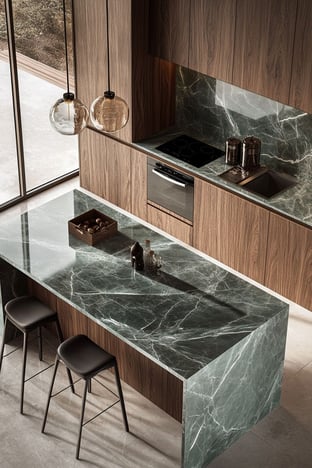
4. Functionality and Thoughtful Minimalism in Decor
Within the tenets of modern design, every object is meticulously selected for its inherent purpose, embodying the principle that "form follows function." The presence of clutter is rigorously avoided, as it detracts from the clarity and serenity of the space. This unwavering commitment to functionality dictates that storage solutions are frequently integrated seamlessly into the architectural framework or bespoke furniture pieces, ensuring that everyday items remain discreetly out of sight and the uncluttered aesthetic is rigorously maintained. Multi-functional furniture, such as ottomans with storage or sofa beds, are often favored.
Decorative elements are curated with exceptional precision, prioritizing intrinsic quality and visual impact over sheer quantity. In contrast to a profusion of small ornaments, a modern space might feature a singular, impactful sculptural piece, a compelling abstract painting, or an exceptionally designed lamp. These select elements serve as powerful focal points, injecting personality and visual intrigue without overwhelming the sensory experience. The strategic use of negative space around these objects is just as important as the objects themselves, allowing each piece to breathe and be fully appreciated.
The overarching objective is to cultivate an environment characterized by profound calm and impeccable order, where the eye is invited to rest and fully appreciate each deliberately chosen element, fostering a sense of peace and efficiency.
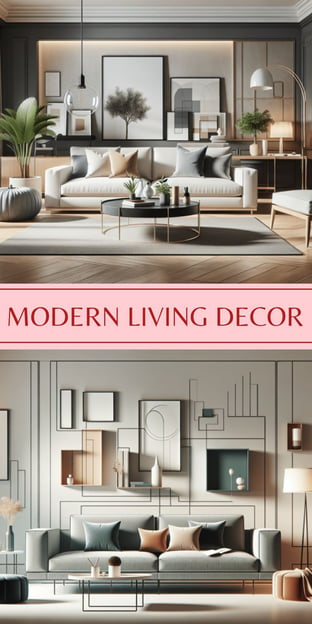
5. The Art of Strategic Lighting
In modern interiors, lighting transcends its basic function of illumination; it is an indispensable and integral component of the overall design narrative, meticulously planned to enhance both aesthetics and functionality. Natural light is maximized through expansive windows, often extending from floor to ceiling, and frequently left unadorned or complemented by simple, unobtrusive window treatments like roller blinds or sheer curtains. This deliberate approach saturates the space with daylight, significantly enhancing the perception of openness and fostering a seamless connection between the interior sanctuary and the external environment.
Artificial lighting is meticulously layered to establish diverse moods and to subtly accentuate architectural features or specific design elements. This layering typically includes:
- Ambient Lighting: Provided by recessed lighting, track lighting, or general ceiling fixtures that offer overall illumination.
- Task Lighting: Focused lighting for specific activities, such as reading lamps by a sofa, under-cabinet lighting in a kitchen, or desk lamps in a home office.
- Accent Lighting: Used to highlight architectural details, artwork, or decorative objects, often through spotlights or wall washers.
Statement pendant lights, minimalist chandeliers, or sculptural floor lamps are often selected not just for their light output but also for their inherent sculptural qualities, serving as both functional luminaires and compelling art pieces that harmoniously integrate with the room's clean lines. The integration of smart lighting systems, allowing for control over brightness and color temperature, further enhances the adaptability and sophistication of modern spaces.
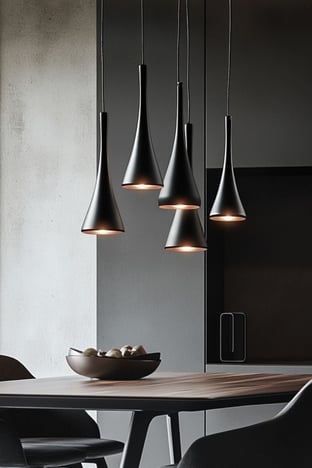
6. The Importance of Texture and Tactility
While modern design often embraces a neutral color palette, it compensates for the lack of vibrant hues through a rich interplay of textures. Texture is paramount in adding warmth, depth, and visual interest to a minimalist space, preventing it from feeling sterile. This tactile dimension engages the senses and adds a layer of sophistication.
- Soft Textures: Plush wool rugs, cashmere throws, linen upholstery, and velvet cushions introduce softness and comfort.
- Hard Textures: The inherent grain of natural wood, the cool smoothness of polished concrete or marble, the ruggedness of exposed brick, and the sleekness of metal provide contrast and visual weight.
- Layering: Combining different textures within a single space (e.g., a smooth leather sofa with a chunky knit throw and a subtly patterned rug) creates a dynamic and inviting environment.
This thoughtful layering of textures ensures that even monochromatic modern interiors feel rich, inviting, and visually compelling, adding a crucial dimension that elevates the overall design.
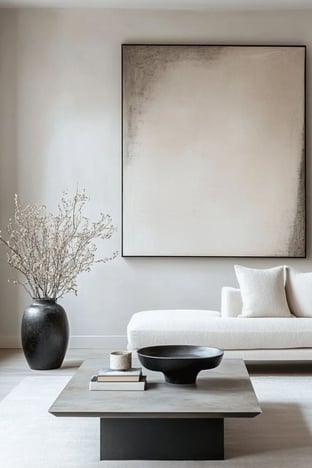
7. Seamless Technology Integration
In contemporary modern design, technology is not an afterthought but an integral element, thoughtfully integrated to enhance functionality and convenience without disrupting the aesthetic. The goal is to make technology disappear into the background, operating effortlessly and intuitively.
- Hidden Wires & Components: A hallmark of modern tech integration is the meticulous concealment of wires, cables, and bulky components, ensuring a clean and uncluttered look.
- Smart Home Systems: Automation for lighting, climate control, entertainment, and security is often built into the design, controlled via discreet wall panels, voice commands, or mobile devices.
- Integrated Entertainment: Televisions might be flush-mounted, hidden behind sliding panels, or integrated into custom cabinetry. Sound systems are often wireless or built directly into walls and ceilings.
This seamless integration ensures that modern spaces are not only visually appealing but also highly intelligent and responsive to the needs of their inhabitants, embodying the ultimate fusion of form and function.
